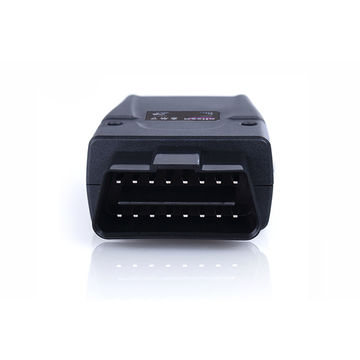Identify the tracking device on the car
Welcome to the news page of Shenzhen Eelink Communication Company.
With the development of science and
technology, more and more high-tech products have gradually emerged, with
advantages as well as many disadvantages.
First of all, there are still many benefits
of car trackers. It can track vehicles, display the actual location of vehicles
in real time, and track important vehicles and goods. It can also plan and
navigate unfamiliar routes; also You can check what you want to see if there
are places you need around; the most important thing is that when you encounter
danger, you can contact the nearest police station according to the tracker on
the car to get the best rescue plan.
In general, these have greatly facilitated
people's lives. But there will also be some criminals who do things that will
harm people based on the car tracking equipment.
If someone installs a car tracker without
you knowing it and monitors your every move all the time, people are watching
you wherever you go, and he is stealing your information at any time. Isn’t
that scary? Therefore, we have to learn to quickly find the car tracker on the
car that is not our own.
The most common active locator on the
market now sends real-time position signals at a certain frequency. Therefore,
the wireless signal detector can capture this signal and find the hidden
locator. In order to avoid interference from other nearby signals, signal
sources such as mobile phones, Bluetooth, and portable WIFI hotspots should be
turned off as much as possible before detection. Some locators only send
signals when the car is moving, but not when the car is parked, so someone
needs to cooperate with the driving/inspection. Passive locators do not send
wireless signals, so they cannot be detected by wireless signal detectors. If
suspicious signals appearing at regular intervals (such as 10, 30, or 60
seconds) are identified, the target area is reduced for subsequent physical
inspections. After the suspicious signal is scanned, the car can be physically
inspected from the outside to the inside with the help of a bright flashlight,
starting from the outside of the car.
The first step is to check the metal
chassis of the car, which is the most common magnetic positioner adsorption. If
there is no car repair slot or lifting frame, you can lie down and go to the
bottom of the car for inspection. Compared to the deep part of the chassis with
thicker metal barriers, the edge of the chassis is easier to install the locator.
If you see a strange object, you can try to pull it off by hand. If it is a
magnetically attached locator, it can be easily removed.
The second step is to check the wheel
baffle. Usually there will not be any external equipment at this position. If the
locator is installed, it can be easily seen. For more professional inspections,
you also need to remove the tires to check the rear position. In this area, a
normal wired sensor will be installed behind some brakes. Don't mistake it for
a locator.
The third step is to check the bumpers. The
inside of the front and rear bumpers made of plastic is a common location for
rapid deployment of the locator. In addition, there may be equipment connected
to the car's electrical system under the front bumper, so before removing any
parts, be sure to check the wiring with the manual.
The fourth step is to check the engine
cover. Generally speaking, this high-temperature metal shell area is not
suitable for placing the locator, but it is not completely impossible, so check
it quickly. After opening the engine cover, compare and observe with the manual
to see if there is any suspicious wiring on the battery, because the additional
wiring may be supplying power to the positioner. In addition, for larger
vehicles such as SUVs, you need to check the unique positions of the roof tray
and spare tire rack.
After completing the inspection outside the
vehicle, you need to move to the vehicle for further inspection.
The first step is to check the seat area,
including the seat headrest, seat cushion, back bag, carpet and other movable
and loose space for activities. In addition, some high-end models have heating
devices in the seats. Pay attention to the comparison and don't mistake them
for the positioner.
The second step is to check the dashboard/foot
zone. The line here is more complicated and is an ideal location for the
locator to hide. Moreover, the positioner can be connected to the car circuit
here to achieve long-term work. To check this area, you need to have the
ability to disassemble the panel. First remove the glove box and the panel
under the steering wheel, then check the wires that are not tied to other
wires, and try to trace the source of suspicious equipment.
The third step is to check the storage
area, including the sun visor, glove box, the area behind the rear seats and
the trunk. If these places are usually filled with debris by you, you need to
be more careful when checking to avoid missing the locator.
The above is how to check the locator.
Tags: car tracker, Shenzhen Eelink
Communications Company, locator inspection,
Related content reading
Application of GPS in the automotive field
Some informations to know GPS car tracker more
- Contact EELINK
 Globalsales@eelink.com.cn
Globalsales@eelink.com.cn tan3051_1
tan3051_1 +86 18218746415
+86 18218746415
- NEWSLETTER
- Getting the latest GPS devices news From Eelink.
- SUBSCRIBE
